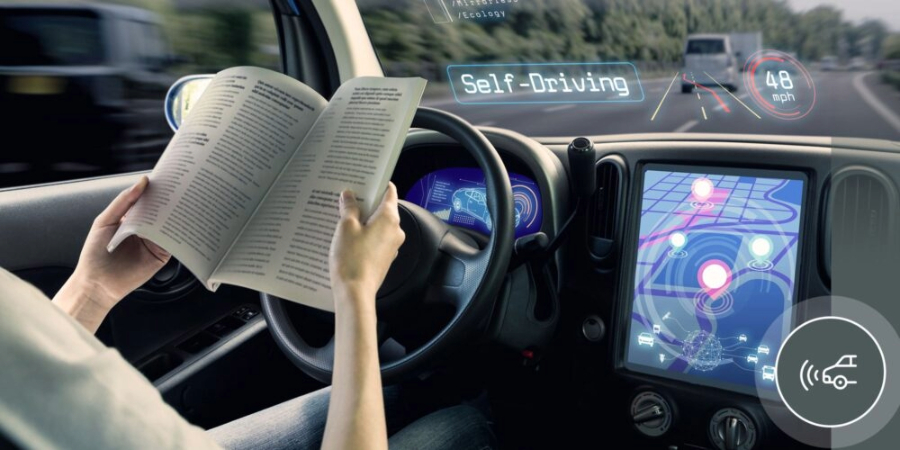Shaping the future of autonomous driving
Self-driving cars or other transportation systems that operate without the assistance of a human driver are typically referred to as autonomous driving. The foundation of autonomous driving is simply the development of technology that can automate the act of driving.
Autonomous mode
Technology that can operate a car without active physical control or human operator supervision, encompassing a combination of hardware and software, remote and/or on-board.
A mode of vehicle operation in which the dynamic driving duty is carried out by autonomous technology, either with or without human intervention to keenly supervise the technology’s performance.
Autonomous Vehicle
A car has autonomous technology that can handle dynamic driving tasks when activated. A human test driver or a remote operator is needed to continuously monitor the operation of an autonomous test vehicle.
Modern cars are sophisticated with electronics and cutting-edge features. The objective is to develop driving systems and software to meet product safety. While human error remains a major contributing factor to road accidents, autonomous cars are built with many safety measures, redundancy, and fail-safe mechanisms to limit hazards, even though the technology promises to dramatically reduce these incidents. Although the exact level of dependability of these driverless cars is still unknown, extensive testing and validation procedures are carried out to guarantee their safety.
Everything that needs to be done in real-time to drive a car in on-road traffic, except choosing final and intermediate locations. This encompasses, among other things like detection, recognition, and classification of objects and events.
- Response to objects and events.
- Maneuver planning: turning, steering, maintaining lanes, and changing lanes, as well as giving the proper signal when making a turn or changing lanes. Acceleration and deceleration.
Why do we need autonomous driving?
Employees may find it simpler to move away from the workplace if they can work from an autonomous car, which could result in a rise in the population of suburban and rural areas. By providing them with alternatives to utilizing the bus or a car-sharing program, AD may help improve the mobility of senior drivers.
Future of autonomous driving
The idea of effectively transporting people to their destinations through fleets of driverless cars has captivated the interest of consumers and spurred billions of dollars in investment in recent years. However, the mobility world still largely agrees that autonomous driving (AD) has the potential to revolutionize transportation, consumer behavior, and society at large, despite several setbacks that have pushed back the dates for autonomous vehicle (AV) debuts and delayed customer uptake. As a result, before the end of this decade, AD might provide hundreds of billions of dollars in value for the auto industry.
Planning for infrastructure and urban development may change as a result of driverless autos. Parking lots and garages may be put to different purposes as a result of a decline in the demand for parking spots and an increase in the importance of mobility services. To accept autonomous vehicles, cities may need to modify their transportation infrastructure, which could present opportunities for both public and private investment.
Effect of Autonomous driving in Auto industry
Automakers’ conventional business model may change if autonomous vehicles become more prevalent. The market for autonomous vehicles is expected to reach $33.5 billion in 2023, and by 2028, it is expected to have grown to over $93 billion.
Automobile manufacturers are looking for new revenue sources through mobility services rather than merely producing and selling cars to individual users. This involves creating self-driving ride-hailing services, car-sharing networks, and subscription-based business models where users pay to use a fleet of self-driving cars instead of buying their own. In order to provide integrated and seamless mobility solutions, this transition may necessitate automakers forming agreements with tech companies and mobility service providers.
Historically, the auto industry has been sluggish to adapt to technological advancements. Due to the reluctance of established automakers to produce a fully functional electric vehicle, innovative start-ups like Tesla Motors (TSLA) have been formed. Technology firms like Google or Apple (AAPL) will probably set the pace if self-driving cars become commonplace, severely undermining the earnings of more established automakers like GM, Ford (F), or Toyota (TM).
Modern cars are sophisticated devices with sophisticated electronics and cutting-edge features. The objective will be to develop driving systems and software to meet product safety regulations as the industry grows the electrification of vehicles. While human error remains a major contributing factor to road accidents, autonomous cars are built with many safety measures, redundancy, and fail-safe mechanisms to limit hazards, even though the technology promises to dramatically reduce these incidents. Although the exact level of dependability of these driverless cars is still unknown, extensive testing and validation procedures are carried out to guarantee their safety.
Source

